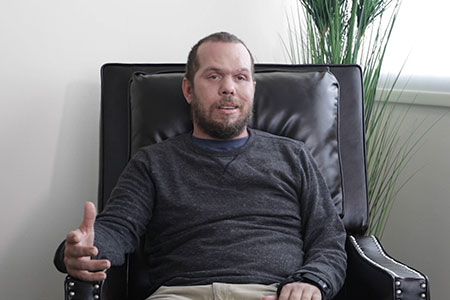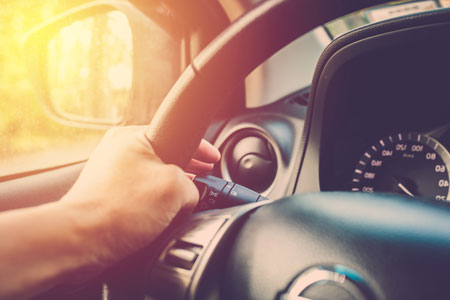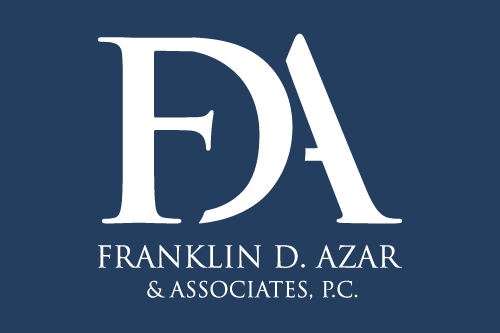 AZAR FIRM OBTAINS $1.1 MILLION FOR SERIOUSLY INJURED MOTORCYCLIST
AZAR FIRM OBTAINS $1.1 MILLION FOR SERIOUSLY INJURED MOTORCYCLIST
Last Thanksgiving was a time of extra celebration for motorcycle enthusiast Cory. He had finally acquired his dream bike, a Harley, and was looking forward to getting out on the road.
Four days later, another driver’s carelessness left Cory fighting for his life. On November 29, 2021, the driver of an RV failed to heed a stop sign at a rural Weld County intersection and crashed into Cory on his Harley. The injuries were extensive and severe; Cory was resuscitated at the scene and rushed to an emergency ward. The medical bills piled up quickly as doctors worked to repair the 37-year-old dairy farmer’s multiple fractures and restore some degree of mobility.
Fortunately, Cory didn’t have to face this ordeal alone. He turned to the law firm of Franklin D. Azar & Associates, which vigorously pursued his right to compensation for the crash. In less than three months the Azar legal team was able to obtain a settlement for Cory of $1.1 million, enough to meet his bills, assist in his ongoing rehabilitation, and provide hope for the future. Cory and his wife and two daughters are now planning to move to Oklahoma and raise cattle on land they’ve acquired there.
Cory says he was impressed by the efficiency and professionalism of his Azar team. “I really didn’t have to do anything,” he says. “They took care of everything and let me focus on healing. The speed of it all was amazing. It wasn’t stressful, and I’m convinced that’s part of the reason I’m doing so well in recovering from this.”
 RIDING SAFE: TIPS FOR PREVENTING MOTORCYCLE ACCIDENTS
RIDING SAFE: TIPS FOR PREVENTING MOTORCYCLE ACCIDENTS
Motorcyclists are in a much more vulnerable situation on the roadways than someone driving an SUV or a pickup truck. According to the National Safety Council, motorcycles account for only three percent of all registered vehicles in the United States and only 0.6 percent of all vehicle miles traveled. Yet motorcyclists account for 14% of all traffic deaths, more than 5000 deaths a year. Based on the fatality rate per 100,000 vehicles registered, motorcyclists are four times more likely to be killed in a crash than car drivers.
More often than not, motorcycle crashes are caused by non-motorcycle drivers, who are driving impaired or distracted, following too close, speeding — or who simply fail to see an approaching motorcycle. Given the degree to which motorcyclists are at risk from others’ carelessness, it’s essential for motorcyclists to drive not just defensively but with a high degree of vigilance at all times.
Here are tips for anticipating — and preventing — motorcycle crashes:
- Get road-worthy. The right protective gear, including long pants and sleeves, leathers or padded or insulated clothing, eye protection, and sturdy boots, can make a significant difference in many crash scenarios. Regular maintenance on tires and brakes and making sure signals and headlights are working also helps. And, whether local law requires it or not, wearing a full-face helmet is one of the best investments you can make in self-preservation; the helmet-less are twice as likely to suffer traumatic brain injury in a crash.
- Get seen. Wearing bright colors and incorporating reflective materials in your clothing and your ride help to alert other drivers to your presence. Keep the headlight on, too, and don’t hesitate to use your horn if you think other drivers are oblivious. Most of all, try to stay out of others’ blind spots.
- Slow down. Reaction time is everything. Give yourself the time and distance to respond to changing road and traffic conditions — debris or stopped vehicles, a blind turn, merging lanes, potholes, etc.
- Anticipate trouble at intersections. Half of all crashes happen at intersections. Motorcyclists are especially at risk, not just from oncoming traffic turning left in front of them but from drivers behind them who are not paying attention and could rear-end them. Check your rear-view mirror, come to a stop at the edge of the lane and flash your brake lights repeatedly. Keep in gear, and if it looks like you’re about to get hit, pull away to the shoulder if possible.
- Avoid lane-sharing and parked cars. Lane-splitting, the practice of riding a motorcycle between lanes of slow-moving or stalled traffic, is illegal in almost all states. But weaving incessantly around other vehicles, even if it’s permitted, can still be highly risky. Remember: space and distance are your friends.
- Adopt a safety-first attitude. Don’t drink and drive, signal your intentions before lane changes, make sure other drivers are aware that you’re there. The relationship between cars and motorcycles doesn’t have to be an antagonistic one, if safety-conscious drivers on both sides understand the importance of sharing the road.
 LEFT-TURN COLLISIONS: A LEADING CAUSE OF SERIOUS INJURIES
LEFT-TURN COLLISIONS: A LEADING CAUSE OF SERIOUS INJURIES
It’s a common maneuver that drivers perform every day. But the statistics indicate that turning left across oncoming traffic is a major cause of serious and even deadly collisions — especially when it’s done without taking time to properly assess traffic conditions.
According to data gathered by the National Highway Traffic Safety Administration, close to half of all traffic accidents happen at intersections, and more than 60 percent of intersection accidents involve left-turn collisions. That means that, if you are unfortunate enough to be in a car crash, the chances of that crash stemming from someone making a left turn are better than one in five. The figures are even worse for motorcyclists; an amazing 42 percent of fatal motorcycle accidents that involve another vehicle occur because of a driver turning left into the path of a motorcycle.
The vast majority of these collisions are due to driver error and are preventable, including:
- Recognition errors—driver was distracted, didn’t check traffic in all directions, failed to see motorcycle, etc.
- Decision errors—driver was speeding, misjudged speed of approaching vehicles, made erroneous assumptions about how other drivers would act, etc.
- Performance errors—driver overcompensated or failed to act in response to changing traffic conditions.
WHO’S AT FAULT IN A LEFT-TURN COLLISION?
Most of the time common sense, as well as the prevailing traffic laws, would indicate that the driver making the left turn is at fault for failing to yield the right of way. But there are exceptions. Perhaps the other driver sped through a red light, was drunk or distracted, or otherwise violated traffic laws; in that event, the burden would be on the turning driver to establish that the other driver was negligent.
Many of the driving mistakes that lead to left-turn collisions can be avoided by exercising caution and patience. Signal the left turn well in advance. Make sure you have an unobstructed view of traffic coming from all directions and the traffic light is on your side. Take into account the speed of other motorists before attempting to cross their path. Obey all traffic laws. And if the turn seems too dangerous, given the speed and volume of opposing traffic, consider selecting another intersection for that turn.
THE CAR ACCIDENT LAWYERS AT FDAZAR
If you or a loved one has suffered injuries or financial loss as a result of a car crash, you may be entitled to compensation. Over the past 30 years, Franklin D. Azar & Associates has represented victims in a wide array of complicated and serious personal injury and wrongful death cases. Our proven track record and expertise have allowed us to grow into the largest personal-injury law firm in Colorado, with offices in Denver, Aurora, Thornton, Fort Collins, Greeley, Grand Junction, Colorado Springs, and Pueblo. If you’ve been injured in a bus, car, truck, or motorcycle accident, call the attorneys at FDAzar day or night at 800-716-9032 or contact us here for a free consultation and no-obligation evaluation of your case.
Join Frank Azars Monthly Newsletter
"*" indicates required fields


